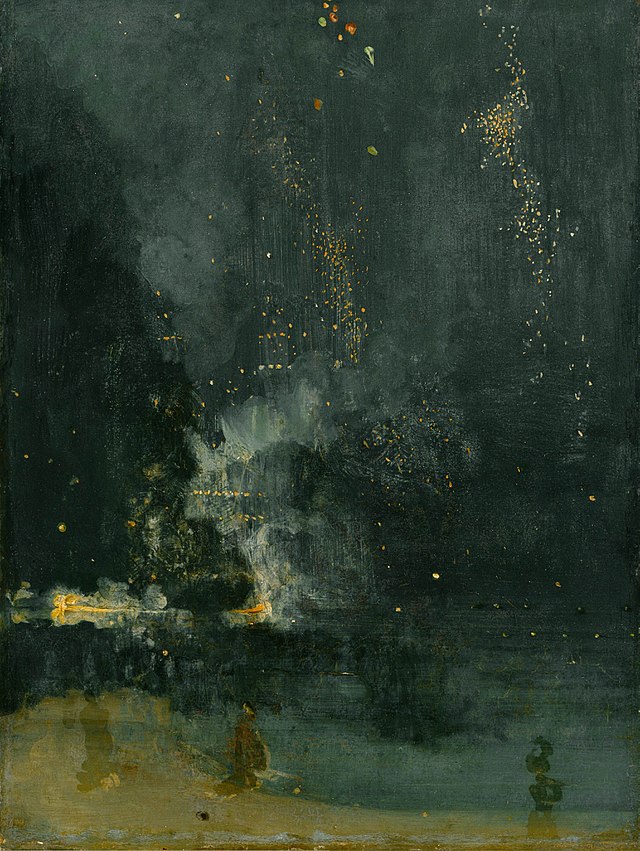Nocturne_(painting)
Nocturne (painting)
Term in painting
In art, a 'nocturne' its broader sense distinguishes paintings of a night scene,[3] or night-piece, such as Rembrandt's The Night Watch, or the German Romantic Caspar David Friedrich's Two Men Contemplating the Moon of 1819.
This page is currently being merged. After a discussion, consensus to merge this page with Night in paintings (Western art) was found. You can help implement the merge by following the instructions at Help:Merging and the resolution on the discussion. Process started in November 2023. |
The examples and perspective in this article may not represent a worldwide view of the subject. (April 2023) |

In America, James Abbott McNeill Whistler titled works thus to distinguish those paintings with a "dreamy, pensive mood" by applying the musical term,[4] and likewise also titled (and retitled) works using other music expressions, such as a "symphony", "harmony", "study" or "arrangement", to emphasize the tonal qualities and the composition and to de-emphasize the narrative content.[5] The use of the term "nocturne" can be associated with the Tonalist movement of the American of the late 19th century and early 20th century which is "characterized by soft, diffused light, muted tones and hazy outlined objects, all of which imbue the works with a strong sense of mood."[6] Along with winter scenes, nocturnes were a common Tonalist theme.[7] Frederic Remington used the term as well for his nocturne scenes of the American Old West.[8][9]